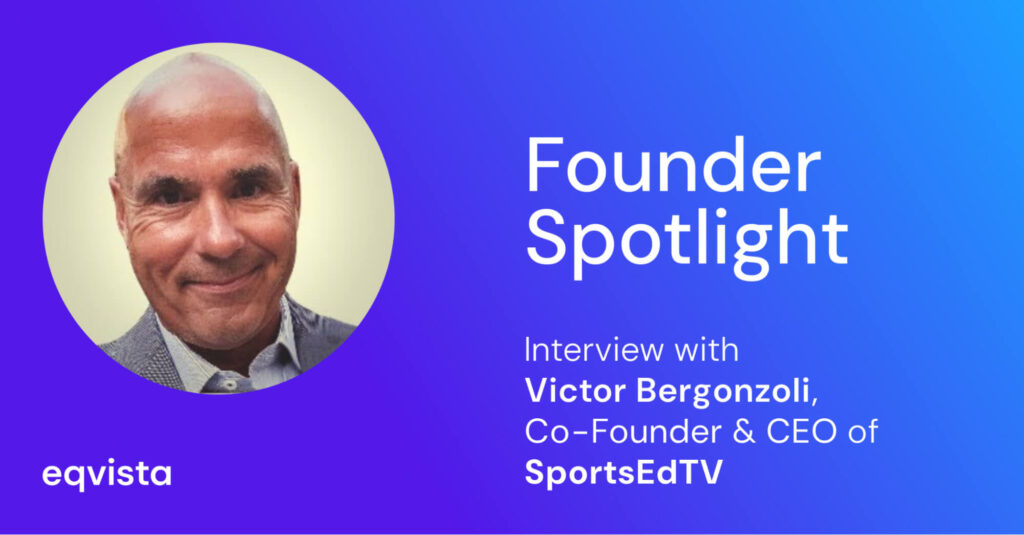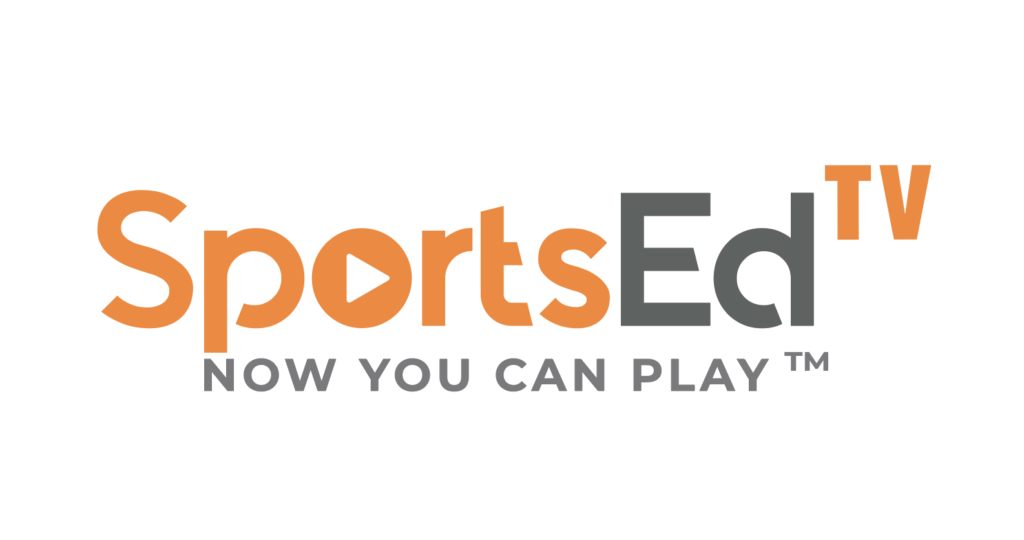Interview With Victor Bergonzoli: How SportsEdTV is Transforming Global Sports Learning
In just a few years, SportsEdTV has become one of the world’s leading platforms for sports education, offering thousands of free and premium training resources to athletes, coaches, and parents worldwide. With over 1 million social media followers, 4,000 videos and articles, and more than 400 senior contributors, the company has built a digital ecosystem that blends expert-driven content with tools for community and learning.
Behind this vision is Victor Bergonzoli, co-founder and CEO of SportsEdTV, whose earlier work at Dartfish helped pioneer the use of video technology in coaching. In this interview, Bergonzoli discusses the company’s mission, its global impact, and the challenges of scaling a sports tech business—all while offering a candid look at equity management and the decision to work with Eqvista.
In this interview, Victor explains the company’s move from Carta to Eqvista, highlighting the need for simple, transparent, and adaptable equity systems for international high-growth startups. His insights offer practical guidance for founders seeking to establish trust and sustain momentum in a competitive environment.

SportsEdTV has rapidly emerged as a premier platform for sports education, offering free and paid training resources for athletes, coaches, and parents globally. Can you tell us about the company’s vision and your journey from Dartfish to founding SportsEdTV?
SportsEdTV was born out of a simple vision: democratize sports education. At Dartfish, I saw how video could transform coaching, but the access was often limited to federations, pros, or those who could afford it. With SportsEdTV, we flipped that model—providing world-class instruction that is accessible to anyone, anywhere, for free.
Today, we’ve grown into one of the largest platforms of its kind, with over 1 million social media followers, 4,000 videos and articles, and more than 400 senior contributors, including experts like Dr. Gylton Da Matta in volleyball and NBA legends Mark Strickland and Tim Hardaway in basketball. Beyond content, the platform offers tools that allow athletes, parents, and coaches to connect with peers, organize their training materials, and build communities. Whether it’s a child in rural India or a parent in Chicago, our mission is to level the playing field. My journey has always been about using technology to empower athletes, and SportsEdTV is the most complete expression of that mission.
How does SportsEdTV differentiate itself from other sports education and video platforms in terms of content quality and user experience?
Most platforms either lock content behind expensive courses or chase entertainment value. We’re different. Our videos are created by Olympians, world champions, and elite coaches, designed to teach—not just attract views. The lessons are short, structured, and practical, making them easy to apply on the court, field, or gym. And we pair this with a supportive global community, so the user experience is interactive, not passive. It’s about real learning, not clicks.
How does SportsEdTV empower coaches, parents, and athletes differently compared to traditional sports education methods?
Traditional sports education often stops at the local club or academy, which leaves millions without access to top-quality coaching. SportsEdTV changes that. Athletes gain on-demand access to elite training, parents get resources to better support their kids, and coaches can amplify their reach and credibility far beyond their physical environment. We don’t replace coaches—we empower them by making their knowledge scalable, giving parents confidence, and giving athletes tools to progress at their own pace.
Could you share a success story where SportsEdTV made a significant difference in an athlete’s development or a coach’s approach?
One of the clearest examples is our partnership with Chicago Public Schools (CPS), one of the largest districts in the U.S. For volleyball, we worked with Dr. Gylton Da Matta to create a 10-week “Back to the Basics” program for 5th and 6th graders. On the basketball side, we partnered with NBA legends Mark Strickland and Tim Hardaway to deliver the same type of structured, fundamentals-first curriculum.
The combination of curriculum and SportsEdTV’s video support gave students a strong foundation while equipping teachers—many of whom don’t have specialized coaching backgrounds—with professional resources. Thousands of kids gained access to quality instruction, teachers became more confident, and coaches embraced new methods. It’s proof that a digital-first approach can scale sports education across entire communities in ways traditional models simply cannot. CPS is a showcase of how SportsEdTV can partner with schools to integrate high-quality coaching into everyday education.

What are some key challenges you’ve faced scaling SportsEdTV, especially in emerging markets?
The challenges go beyond building great content. In emerging markets, we face issues like limited internet bandwidth, language diversity, and a lack of awareness about digital learning tools. We’ve addressed these by designing mobile-first delivery, adding subtitles in multiple languages, and working with federations and NGOs to increase reach.
That said, our scale has already been remarkable—every country in the world has watched content on SportsEdTV. The challenge is not whether people can find us, but how we continue to adapt to local realities and deepen our impact where resources are limited. It’s about making sure our platform is not just globally visible, but locally relevant.
What role do you see SportsEdTV playing in the global sports ecosystem in the next 5 to 10 years?
In the next decade, I see SportsEdTV becoming the backbone of sports learning worldwide. Federations will use us to extend their reach, schools will integrate us into their curriculum, and athletes will rely on our resources as daily training companions.
We already have a foundation of over 1 million followers, 4,000 videos and articles, and 400+ senior contributors. In 5–10 years, I see those numbers multiplying—tens of millions of engaged users, tens of thousands of curated learning resources, and a contributor network that spans every major sport and geography. As health, fitness, and sports continue to converge, our role will extend beyond teaching skills: we’ll help athletes, parents, and coaches focus on long-term wellness, resilience, and participation in sport for life.
Managing a growing sports tech company comes with unique challenges in equity and cap table management. What are some common complexities SportsEdTV faced, especially as the user base and investor interest scaled?
Like many fast-growing companies, the complexity came from managing equity across multiple geographies and stakeholder groups—founders, employees, advisors, and international investors. Each group brings its own reporting and compliance needs. Without a structured, transparent system, things could get messy quickly. Keeping everything updated and clear was critical to maintaining trust, which is essential when you’re scaling.
SportsEdTV previously utilized Carta for cap table management. What drove the decision to reevaluate and ultimately transition to Eqvista for your equity management needs?
The main reason we chose Eqvista was the ease of use and pricing compared to Carta. Eqvista gave us more flexibility, and the support has been outstanding. At our stage, efficiency matters—we want systems that help us grow, not slow us down. Eqvista has made managing our equity far simpler and more cost-effective.
As you raised multiple funding rounds and expanded internationally, how critical was transparency and ease-of-use in equity management systems for your team and stakeholders?
It was absolutely critical. Investors and stakeholders—whether in the U.S., Europe, or Latin America—don’t want complexity, they want clarity. A user-friendly, transparent equity system builds confidence, reduces friction, and speeds up decision-making. Transparency isn’t just nice to have—it’s the foundation of trust when you’re operating across multiple markets.
For other fast-growing sports and tech enterprises, what advice would you offer regarding best practices for equity management and cap table organization?
My advice is simple: don’t wait. Get your equity house in order from day one. Use a system that is simple, affordable, and able to scale as you grow. Keep your cap table current and transparent—it will save you countless headaches and strengthen your credibility with investors. The earlier you build that foundation, the more freedom you’ll have to focus on growth instead of untangling paperwork.
